Planting a Bulb Lasagne
In Autumn when the weather can be a little iffy, it is always good to look forward to spring and plan a container that will bring some cheer on a cold grey day.
A BULB LASAGNE is one of our favourite ways of injecting colour into a spring garden or terrace over a long period of time and is also a great activity to do with children.
The secret is to select bulbs with different flowering periods in spring and then layer them within a large planter as shown below.
Follow our 'HOW-TO' guide to planting your own bulb lasagne this autumn and then sit back and wait for the show to start in spring.
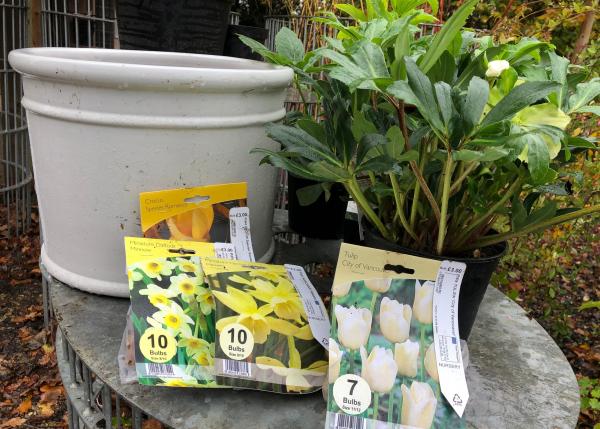
First pick a selection of spring bulbs that will flower in succession over a long period and combine well in terms of colour.
Here we have chosen CROCUS species 'Romance' which flowers February to March, NARCISSUS 'Hawera' which blooms March to April and TULIPA 'City of Vancouver which flowers from late April into May.
To top it all off we will add a small HELLEBORUS niger 'Mont Blanc' which will bloom from mid December onwards, extending the period of enjoyment even more.
These will all be planted in a large recyclable black plastic pot placed inside a large white earthenware pot for flexibility. Once the spring display is over, the inner pot can be replaced with one planted up for summer and even later, one for autumn.
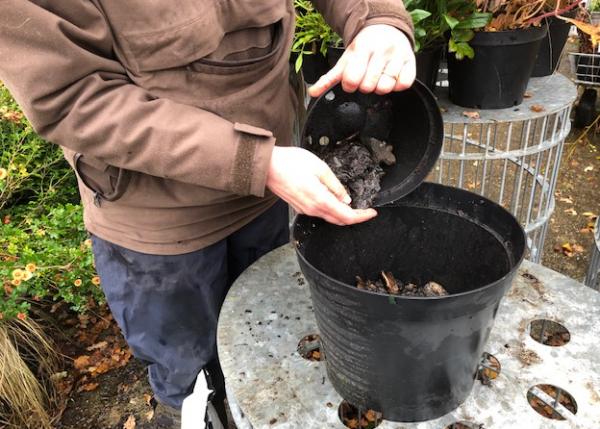
Although both the white pot and black plastic pot have drainage holes, it is still a good idea to make a reservoir at the bottom of the black pot where excess water can collect within the pot before draining out.
To create the reservoir Alex puts a 3cm layer of small stones in the bottom of the pot and shakes them level.
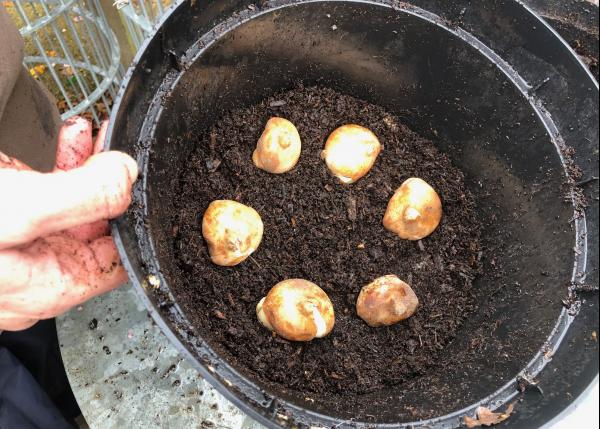
She then covers the stones with a 3cm layer of compost and gently shakes the pot to remove any air pockets.
Now to start planting the bulbs. A simple rule to follow is '
'last to flower (and in this case the largest bulb) is planted lowest in the pot'.
The first bulb layer to be planted is the TULIPA.
Alex carefully places the tulip bulbs 'pointy side up - hairy side down' in a circle and then covers them with 3cm of compost, levels it off and gently shakes the pot.
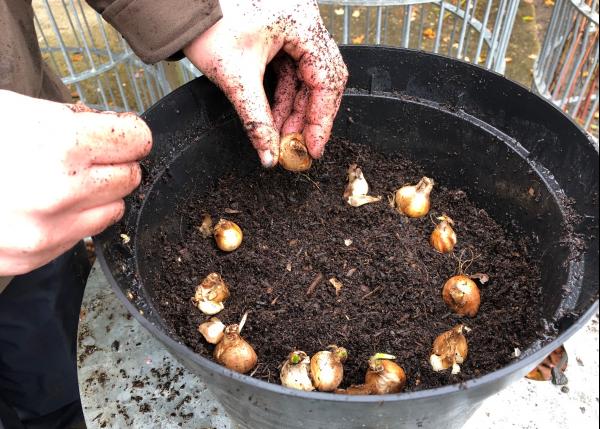
The second layer to be planted is the NARCISSUS - again in a circle, pointy end upwards.
Do not worry too much if the layers overlap occasionally, the shoots will bend around any bulbs above as they grow to reach the sunlight.
The NARCISSUS are then covered with a 3cm layer of compost and levelled off.
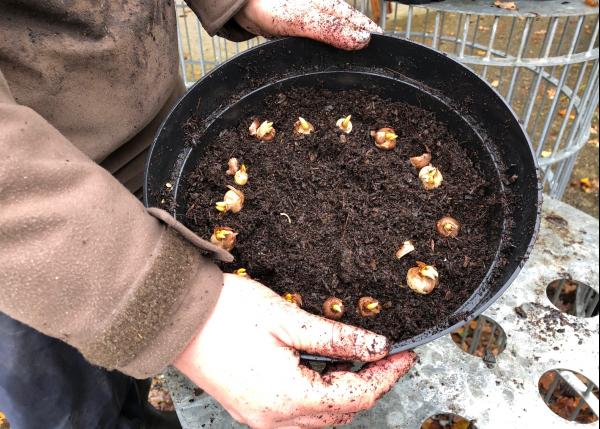
The third and last layer of bulbs to be planted is the CROCUS - first to flower and in this case the smallest bulb.
Once again Alex plants these 'pointy end up, hairy end down' in a wider circle making room for the roots of the small Hellebore which she adds at this stage.
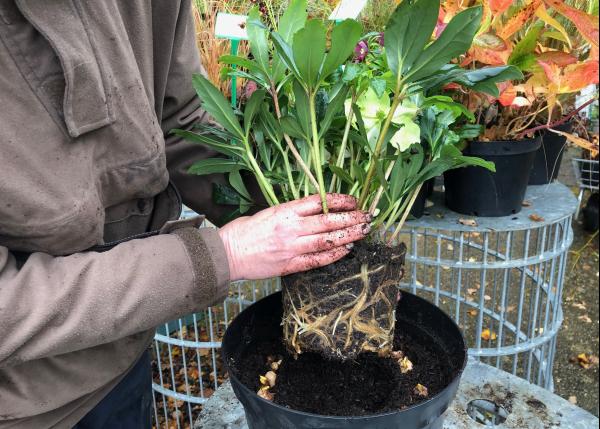
She then adds compost carefully around the sides of the Hellebore and on top of the CROCUS bulbs, gently shaking the pot to settle the compost until its surface is approximately 1.5cm below the lip of the plastic pot, allowing the pot to be watered without washing away the compost.
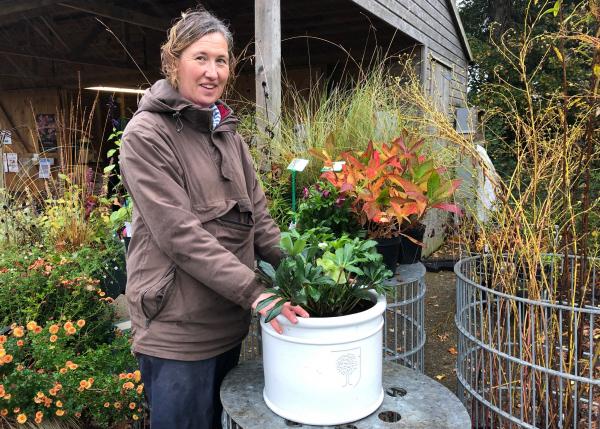
ALL FINISHED - the final planter in all its glory.
If the weather is dry, give the pot a water then leave it outside to catch natural rainfall from autumn to spring.
